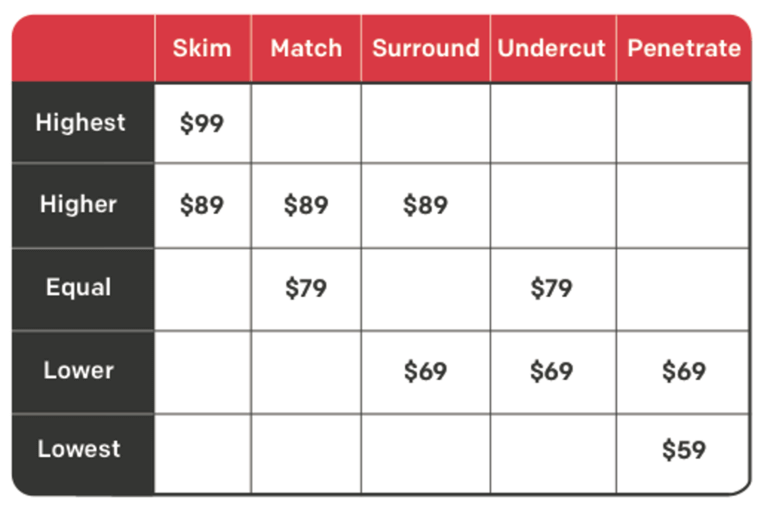
Your brand is your promise to your guests. It’s what they’re expecting from you when buying your services, whether you know it or not. As your brand’s promise is not explicit, we often see hotel managers underdelivering, or even overdelivering because they don’t know exactly what they’re communicating to their customers.
NB: This is an article by PriceBeam
They typically know their brand positioning like the back of their hand. Every time a new commercial is launched, they know exactly what this commercial communicates. They even follow up, look at customer feedback, and reevaluate their brand positioning accordingly.
But they fail at taking their price positioning into consideration. One of the many functions of a price is that it conveys a quality message; if I show you two white t-shirts, one at $5.00 and one at $25.00, you’ll assume the one at $25.00 is better quality. That’s branding! It’s a promise. If you buy the $25.00, you’ll be relatively more disappointed or angry if it turns out to be of bad quality than you would with the $5.00 t-shirt. You feel that the manufacturer underdelivers to a greater extent.
Similarly, if you buy the $5.00 t-shirt and it turns out to be great quality you’ll be amazed and happy, whereas if the same t-shirt had cost $25.00, you’d just feel you got what you paid for.
Of course, this article is not about t-shirts; it’s about hotel room rates, how they affect your price positioning, and what empirical data tells us about different price positions and revenue per Available Room (RevPAR).

Skim/Premium Price Position
You’re more expensive than the rest. Customers go onto the website of their preferred travel agent and immediately sees that your rooms are a level above the competition. That, in itself, makes you look attractive: it’s like when you go to a steak house and you see that premium Japanese Wagyu cut on the menu 3x more expensive than the rest of the menu. You may not even know what wagyu is, but you still crave it because if it’s that expensive it must be that good.
Of course, a premium price positioning should be backed up by high quality. Low quality/high price is not a desirable position; even if you can pull it off short-term, you’ll soon gain a terrible reputation with customers and in the industry.
That being said, you can still set a higher price than you feel your service is ‘worth’ intrinsically — in fact, that’s what a premium price positioning is. You provide great value, and make your customer perceive the value they get to be even higher than it is, by setting a very high price.
Price Matching
You’re confident in your own value, but at the same time, you don’t feel that you can pull off a premium pricing strategy. You don’t want to undercut your competitors (that gets messy, right?), so you match your prices with theirs. At least, your average rooms will be matched — then, perhaps, you price other rooms a little higher relative to the competition once customers have been reeled in and revealed their strong purchasing power.
From a positioning perspective, this is often an unwise strategy. Firstly, you don’t position yourself at all as you don’t differentiate yourself. You’re just the same as everyone else, and customers choose your establishment randomly as were they first-time customers at an Indian restaurant.
Moreover, studies have shown that the fact that two or more product are similar can lead to customers postponing their purchase or not buying at all. Consumers are very afraid of making bad purchase decisions, and if the choice is too difficult (i.e. they have no clue which option is the wisest) they’ll just not buy at all (or find someone who sticks out).
Undercutting
Just don’t.
It does get messy. Your competitors will have to answer back, and you’ll end up with razor-thin margins, terrible brand health, and it was all for a short-term gain. It’s a race to the bottom, and in the long-run there’s only one winner (or loser), and that is the cost-leader.
Of course, that is not the same as saying you shouldn’t compete. Sure, you must compete! That’s what keep the wheels turning, right? But there are so many great ways to compete that aren’t your price. For inspiration, read our this article on how Ritz-Carlton won a price war without lowering prices.
Penetration Pricing
It’s in the same league as undercutting, the only difference is that low pricing is the strategy right from the beginning. It’s tempting if you’re a new entrant, yes, and we all know how satisfying it is to have enormous revenue, scale, etc. But this imperialist mind-set will not do you any good in the long-run. You’ll set a horrible business precedent that you’ll inevitably have to correct later in your business’ life, and low prices don’t generate profits.
How They Worked in Reality
To sum up, let’s look at how these price positions worked in reality. Cornell University has compiled a comprehensive study of price positioning, and collected data for more than a decade to prove, using hard facts, that penetration pricing and undercutting are losing strategies.
In general, hotels that employed a premium pricing strategy, or a price matching strategy, with the majority of their rooms priced above the competition, reported the highest RevPAR.
This conclusion is consistent during booms and recessions; the study singled out the prominence of penetration pricing during the Great Recession of ’08 — where RevPAR was generally much lower due to the decline in economic growth — and even during these times, the demand was relatively inelastic. Those that tried to employ an ‘occupancy grab’ tactic, where prices were continuously lowered until rooms were filled, found that the higher occupancy rate did not make up for the negative price effect of lowering room rates. Overall, it translated into a lower RevPAR than their premium counterparts.




